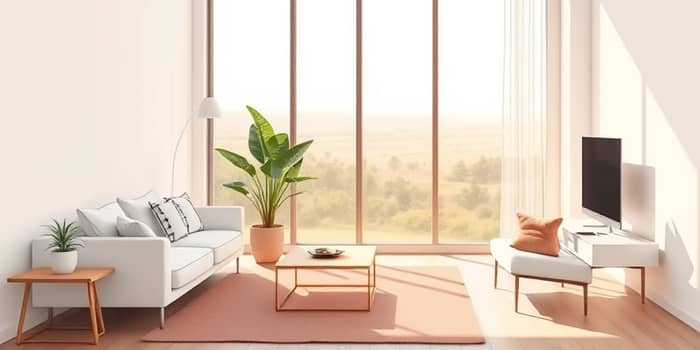Minimalism often evokes images of sparse rooms and bare walls, but beneath its calm surface lies a world of intentional living and mindful purchase behavior. This movement isn’t just about aesthetics—it’s an empowering financial strategy. By embracing a lean lifestyle, you can transform your spending habits, strengthen your resilience to economic shocks, and arrive at a sense of lasting fulfillment.
Understanding Minimalism and Its Philosophy
At its core, minimalism champions owning fewer but higher-quality possessions. Practitioners focus on value and long-term satisfaction rather than accumulating items that add clutter and stress. This shift from quantity to quality can reshape your relationship with money, turning every purchase into a deliberate decision rather than an impulse.
Adopting minimalism means acknowledging that each object in your life carries hidden costs—maintenance, storage, replacement, and the mental burden of clutter. By reducing the number of possessions, you free both your budget and your mind.
Reduced Housing and Living Expenses
One of the most immediate financial perks of minimalism is downsizing to smaller, more efficient spaces. Less square footage translates to lower rent or mortgage payments, reduced property taxes, and smaller utility bills.
Minimalists often opt for simpler homes or apartments, saving an average of thousands of dollars a year. With fewer rooms to maintain, cleaning supplies and repair costs drop significantly. Over time, these savings compound, liberating funds for investments or experiences.
Mindful Spending and Consumer Habits
Impulse purchases are a silent drain on your finances. By practicing minimalism, you cultivate purpose-driven shopping aligned with your core values. Each item you consider must pass a simple test: Does it serve a meaningful purpose in my life?
- Audit subscriptions and recurring fees regularly to eliminate underused services.
- Adopt the “buy it once” philosophy by investing in durable, high-quality goods that last for years.
- Embrace multifunctional products—mason jars as glassware, storage, and decor, for example—to minimize duplicate purchases.
This approach curbs wasteful spending and fosters a deeper appreciation for the items you own.
Daily Savings Through Multifunctional Living
Minimalists excel at finding multiple uses for single items. This cost-effective multifunctional mindset can dramatically reduce household spending. For instance, a quality blender can replace separate juicers and food processors, while a convertible sofa becomes both seating and a guest bed.
Repurposing and upcycling extend lifespans of existing objects—repairing, repainting, or reimagining instead of replacing. Not only does this save money, but it also fosters creativity and environmental stewardship.
Streamlining Transportation and Mobility Costs
Vehicles are among the most expensive assets to own. Minimalists often choose fewer or modest cars, cutting insurance, maintenance, and depreciation. As of June 2024, the average new car in the US costs $48,644, dropping by up to 35% in three years. Opting for reliable used models can save between $1,600 and $4,433 annually.
Beyond purchasing choices, minimalists may embrace alternative transportation—biking, public transit, or car-sharing—which further reduces expenses and carbon footprint.
Elevating Finances with Capsule Wardrobes and Food Planning
A capsule wardrobe—curated, timeless clothing basics—eliminates the pressure of fast fashion and its hidden costs. Investing in a few quality pieces replaces the cycle of seasonal shopping, cutting clothing expenses by hundreds or even thousands each year.
- Engage in “no shopping” challenges to curb impulse buys.
- Plan meals around pantry staples to avoid food waste and dining out.
- Prep only what you need, using services like eMeals for guidance.
Minimalist meal planning also reduces grocery bills and lessens the environmental impact of food waste.
Additional Advantages Beyond the Wallet
Minimalism extends far beyond financial gains. Decluttering your surroundings often leads to reduced stress and improved mental clarity. A tidy, well-organized environment fosters productivity and decision-making, creating a virtuous cycle of positive habits.
Consumers who donate or sell unused possessions experience emotional rewards and contribute to community welfare. This societal benefit adds a profound layer of satisfaction to the minimalist journey.
Practical Steps to Embrace Financial Minimalism
Transitioning to a minimal lifestyle can feel daunting, but small, consistent actions make all the difference. Consider automating finances—bill payments, savings transfers, and investments—so you avoid late fees and impulsive deviations from your budget.
Digital minimalism is equally important: unsubscribe from marketing emails, delete unused apps, and organize digital files. A streamlined digital environment limits distractions and curbs temptation to shop online.
Quantifiable Savings and Key Takeaways
By now, the numbers speak for themselves. Downsizing housing, curbing consumer impulse, and rethinking transportation can yield substantial annual savings. Here’s a snapshot:
Carrying fewer possessions not only reduces direct costs but also opens up opportunities for passive income—renting out spare space or selling unneeded items.
Ultimately, minimalism is a holistic approach that aligns your spending, environment, and mindset. By prioritizing what truly matters, you unlock financial freedom, mental clarity, and a richer, more meaningful life.
References
- https://nurp.com/wisdom/the-financial-benefits-of-minimalist-living/
- https://www.cheapism.com/money-saving-minimalist-habits/
- https://www.maximumgratitudeminimalstuff.com/2024/10/how-to-get-rich-with-minimalism.html
- https://www.thesimplicityhabit.com/frugal-tips-save-more-money-with-minimalism/
- https://richinwhatmatters.com/2025/01/04/9-ways-minimalism-will-save-you-money-in-2025/
- https://www.happysimplemom.com/minimalism-saves-money/
- https://pmc.ncbi.nlm.nih.gov/articles/PMC10249935/
- https://www.betterup.com/blog/minimalism-tips










